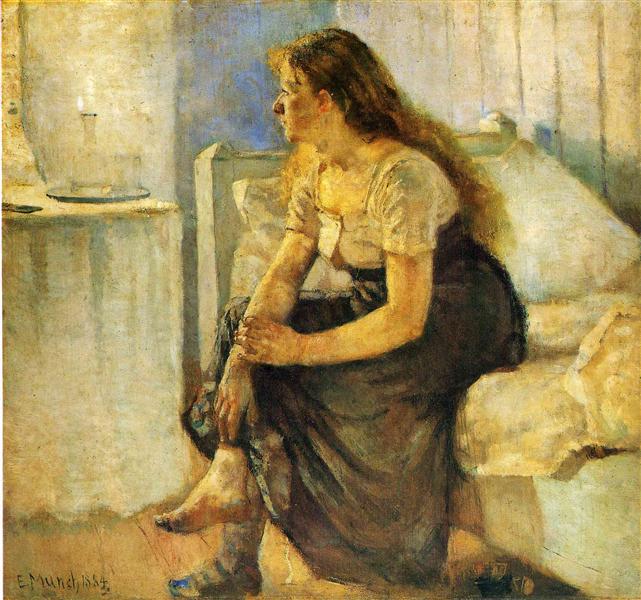Description
Edvard Munch's "Tomorrow" painting, made in 1884, is a work that captures an atmosphere of reflection and melancholy typical of the Norwegian artist. In this painting, Munch is immersed in the exploration of human nature through the representation of a daily scene, where the light of dawn seems to invade the composition and transform the perception of the characters that inhabit it.
At first glance, what stands out in "tomorrow" is the expressive use of color. Yellow and orange tones, typical of morning light, intertwine to create a feeling of warmth and intimacy, but at the same time, a series of shadows that suggest fragility and nostalgia emerge in the work. The color palette, often associated with symbolism, reflects the duality of joy and sadness, a recurring theme in Munch's work. In the upper part of the paint, the gradient of warm colors suggests a sky that romanticizes dawn, while the shadows in the figures produce an emotional isolation effect.
The composition of the painting is organized around a couple of figures that are in the foreground, whose presence is central in the visual narrative. These figures, represented almost schematic, seem to reflect a silent dialogue about the transitions of life. The position of the characters suggests an intimate conversation but also a certain emotional distance, which is characteristic of Munch's style. The way in which the figures are located in the scene and their interaction with the environment are key to understanding the existentialist message that underlies the artist's work.
This painting It is immersed in the concerns of the period in which it was created, in a Norway still marked by a path of modernization and social change. Munch, as a central figure of Nordic symbolism, used in this work an approach that combines psychological exploration with a deep sense of nature. It is plausible to consider that "tomorrow" is a reflection of the moods experienced by the artist, especially with the presence of that overwhelming dawn that could symbolize both a new beginning and the melancholy that represents the passage of time.
While "Tomorrow" may not be as well known as some of Munch's other masterpieces, such as "The cry", it is important to contextualize it within the corpus of her work and symbolism in general. The theme of time, love, death and loneliness is palpable in the works of Munch, which is characterized by an emotional and expressive approach. Contemporary works such as Gustav Klimt's "kiss", also in the field of symbolism, can be found in resonance with the way Munch addresses the issue of human relations and the passage of time, although with a different nuance and a visual language own.
"Tomorrow" invites the viewer to reflect on the human condition and the complexity of the emotions that can arise in the most everyday moments. The captivating atmosphere of painting, along with the masterful use of color and composition, makes this work a remarkable example of Munch's search to express the intense emotional landscape of existence. Through this piece, the viewer not only presence a luminous moment of the day, but also relates to the depths of the human soul in its coexistence with time and space.
KUADROS ©, a famous paint on your wall.
Hand-made oil painting reproductions, with the quality of professional artists and the distinctive seal of KUADROS ©.
Art reproduction service with satisfaction guarantee. If you are not completely satisfied with the replica of your painting, we refund your money 100%.

